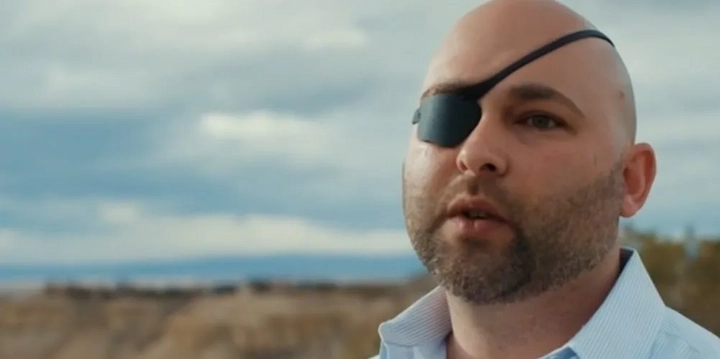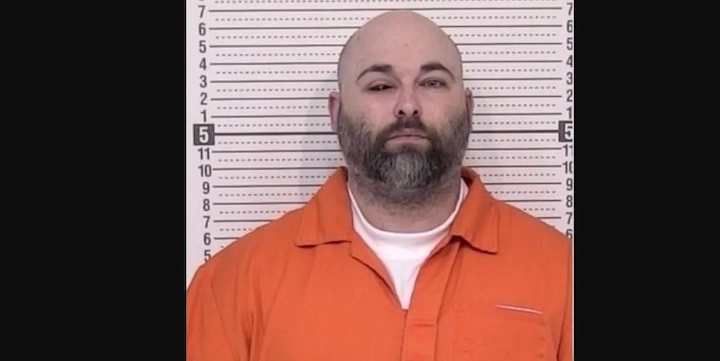John Lott’s Shooting Case: From Gunshot Survivor to 72-Year Prison Sentence
John Lott’s case sent shock waves through Colorado Springs after a domestic dispute escalated to gunfire in October 2021. This article examines how an ordinary relationship can become violent, resulting in multiple shootings and serious charges.
We explore both perspectives of the incident, the unusual brain trauma defense strategy, and the verdict that led to Lott’s lengthy prison sentence. The case raises important questions about domestic violence, self-defense, and how courts handle conflicting narratives in violent crimes. Lott’s story provides insight into how quickly circumstances can change and the consequences of one’s choices.
The Night That Changed Everything Subheader
John Lott and his fiancée went out one Saturday night in Colorado Springs on Oct. 16, 2021, for a typical evening at a local bar. Video surveillance captured the couple laughing and eating together, never foreshadowing the violence that was to come.
Lott’s behavior quickly shifted after he left the bar, according to his fiancée. She alleges he assaulted her, choked her into unconsciousness, and forced her into their car. But back at their home on Montarbor Drive, the situation escalated.
“He took me inside and continued to hurt me,” she told police. “Then he get a gun and tried to shoot me.” The woman, fearing for her life, went to the neighbors’ house for safety. But the danger followed.
Lott allegedly chased her with a revolver and shot at the neighbor’s house. He then reportedly went home, retrieved an AR-15 rifle, and resumed shooting. The neighbor fired back in self-defense, striking Lott in the head with a bullet. When officers responded to the scene, they found Lott injured but conscious.
Officers arrested him, charging him with multiple crimes, including two counts of attempted murder. The bullet that hit Lott would later prove crucial to his defense strategy and alter his appearance forever — he lost his left eye and now sports a distinctive black prosthetic eye, with a white crucifix.
A Tale of Two Counter-Narratives
When police questioned him the day after the shooting, Lott said he could not recall most of the events from that night. He attributed his memory loss to the head trauma from the gunshot wound. “I don’t remember what happened,” he told investigators. “The last thing I remember was being in the bar.”
Although police discovered bullet casings from a revolver in Lott’s residence, lending credence to portions of his fiancée’s account, they could not find any external security footage that might confirm the sequence of events.
Lott did tell police that, as best as he could recall, his fiancée had also been physically aggressive during their fight. This allegation was part of his defense strategy as his case approached trial. Lott later posted a $50,000 bond and hired an attorney to defend him. Almost immediately, his legal team zeroed in on the head injury.
The Brain Trauma Defense
The defense evaluated Lott using a clinical psychiatrist and a medical examiner. Their discovery revealed something surprising — Lott might have been shot multiple times, including once by a revolver, before the neighbor shot him. His lawyers contended that by the time Lott shot at the neighbor’s home, he was already afflicted by an injury to his head that affected his judgment and behavior.
They argued that he was not entirely in control of his actions because of the trauma to his brain. “The brain injury caused serious impairment in his ability to make reasoned decisions,” his lawyer wrote in court.
“He was functioning in a severely compromised mental state.” This was surely a defense tactic intended to explain why a man with no known history of violence would suddenly find himself in a position to commit such extreme violence.
The lawyers hoped to persuade the jury that head trauma, not criminal intent, drove Lott’s actions that night. The legal approach underscored the complexity of cases involving brain injuries and their effects on behavior — an emerging area of interest in criminal defense.
Legal Proceedings and Verdict
Lott’s path through the legal system was not straight. His first trial ended in a mistrial after his attorney, Andrea Hall, was unexpectedly hospitalized during the proceedings. That would have pushed his case into 2025.
His second trial started in January 2025, with his defense team insisting that the head injury affected his judgment. His former fiancée also testified against him, although the defense noted several differences between her account of what happened on the morning in question and her original statements.
The jury came to a split decision after hearing all of the evidence. And had convicted him on 14 of the 18 charges he faced, including attempted first-degree murder of his neighbor. But they were deadlocked on a charge of trying to murder his ex-fiancée — indicating they had doubts about some elements of her testimony.
Lott was ordered by a court to serve 72 years in prison. Now 37, he will have to serve at least 24 years before he is eligible for parole. He is now incarcerated at Bent County Correctional Facility in Colorado, where he will remain until his first parole hearing in March 2058.
Where Is John Lott Today?
John Lott is currently in the custody of the Colorado Department of Corrections. He’s a long-term inmate at Bent County Correctional Facility, trying to feel at home in a cell. The physical reminders of that October night haunt him every day.
Having lost his left eye in the shooting, Lott now has a distinctive prosthetic eye — solid black with a miniature white crucifix in the middle. Because of his 72-year sentence, Lott will not be eligible for parole until 2084, when he would be 97.
His case is still referenced in conversations about domestic violence, self-defense, and the legal complexities of brain trauma defenses. His ex-fiancée has moved on with her life, but the psychological effects of that night surely lingers. She was never charged in connection with the incident.
Frequently Asked Questions
What crimes did John Lott get convicted for?
In October of 1992, John Lott was found guilty of 14 out of 18 charges, including attempted first-degree murder of his neighbor. He was acquitted of trying to kill his ex-fiancée.
What prison sentence is John Lott facing?
The court sentenced Lott to 72 years in prison. He must serve at least 24 years to be eligible for parole.
Was John Lott involved in crime before this event?
The story doesn’t say whether he has any previous criminal history, which would suggest this violent episode may have been out of character.
What was John Lott’s defense strategy like?
His defense lawyers maintained that a gunshot wound to his head affected his judgment and behavior during the incident, rendering him incapable of fully controlling his actions.
What is the story behind John Lott’s eye?
During the incident, Lott was shot in the head by the neighbor and lost his left eye. He now has a black prosthetic eye with a white crucifix design.
Final Words
The John Lott case is a reminder of how life can change instantly. What started as an ordinary evening ended with one man facing decades in prison and multiple lives changed forever.
This case raises significant questions about domestic violence, self-defense rights, and how brain injuries can influence behavior. The jury’s split verdict suggests that they found some truth in both sides’ accounts, but that does not change the severity of the consequences.
Lott will spend the rest of his life, most of it behind bars, and he’ll be marked both physically by a distinctive prosthetic eye and legally by a conviction. For people in domestic relationships who are starting to show warning signs, this case is a cautionary tale about how quickly the competing forces of conflict can spiral out of control.
For the legal system, it reflects the continuing challenge of deciding fact when there are competing narratives and layers of medical complexity. As John Lott serves out his sentence in Colorado, his case joins countless others demonstrating the irreversible realities that can result from a single night’s actions.
Table of Contents



